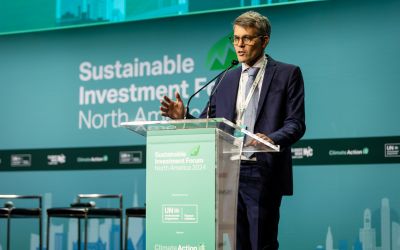Allocating the World’s Carbon Budget
The world has a carbon budget. Deciding how to spend it is complicated, contentious and consequential. Countries and companies are responding to the urgent reality of climate change with various net zero commitments.

The world has a carbon budget. Deciding how to spend it is complicated, contentious and consequential. Countries and companies are responding to the urgent reality of climate change with various net zero commitments.
Investors might well ask, how will net zero goals be achieved? There are different scenarios for the world’s nations to meet Paris global warming targets. At the sector level, investors need to identify and quantify the sectors with the ability to move decisively to decarbonize, and those that are looking at a longer time horizon.
The U.N.’s Intergovernmental Panel on Climate Change recently estimated the world’s remaining carbon budget for different warming scenarios along with scientists’ confidence in these estimates.
National differences
At the country level, structural issues and availability of resources will make decarbonization efforts feel different, but to meet Paris goals, all countries ought to decarbonize quickly.
The report sets out various scenarios, for instance, it is estimated that 500 gigatons of CO2 emissions emitted after the beginning of 2020 would result in a 50% chance of limiting global warming to 1.5°C, an ambitious Paris goal. On the other hand, 900 Gt of CO2 gives an 83% chance of keeping warming below 2.0°C, a more generous Paris goal.
Investors need to analyze the structural differences among nations that will influence ability to reach Paris goals. The paths to net zero will differ.
For instance, 20% of India’s annual greenhouse gas emissions come from agriculture, more than double the equivalent share in the EU and about four times as much as in the US or China.
While it is much harder and more expensive to reduce emissions from agriculture than it is for some other activities, a relatively large share of electricity in India comes from coal, which could relatively inexpensively be switched to cleaner forms of energy, making it easier for India relative to others in this respect.
Sector analysis
The issue of how carbon budgets should be allocated across sectors is even more pertinent to investors, not least because the ability to decarbonize quickly and cheaply differs more across sectors than it does across countries.
For example, without a major technological breakthrough, it would be virtually impossible for any airline to significantly decarbonize its operations within the next few years without going bust, but the same could not be said of an electric utility.
There are many reasons that an investor would want to know an industry’s decarbonization potential: to manage risks; spot opportunities; engage with corporate management; comply with financial reporting rules; set metrics and targets; invest sustainably; anticipate regulatory changes.
If a flat economy-wide carbon tax were imposed, for example, industries with less ability to decarbonize would suffer greater costs. But regulations (and taxes) are often based on the decarbonization potential of industries. (The UK government’s coming ban on the sale of new petrol and diesel cars is an example.)
Moreover, sustainable and Paris-aligned investing strategies are not all about selling carbon-intensive assets and buying renewable energy. Yes, renewable energy is hugely important, but investment also needs to happen in those areas where low-carbon solutions do not yet exist.
Transition pathways
Organizations such as the Science Based Targets initiative and Transition Pathway Initiative provide some useful guidance on the decarbonization potential of different sectors and sector-specific transition pathways considered to be consistent with Paris climate goals.
The UK’s Climate Change Committee – an independent body which advises the UK government on how it should set and manage the country’s carbon budget – is another useful source.
They assume under one scenario that by 2050, weekly meat consumption for the average household declines by 33%, all new cars sold are battery powered, electricity is virtually carbon free, wooded areas increase by around 40% and restored peatlands are nearly tripled.






